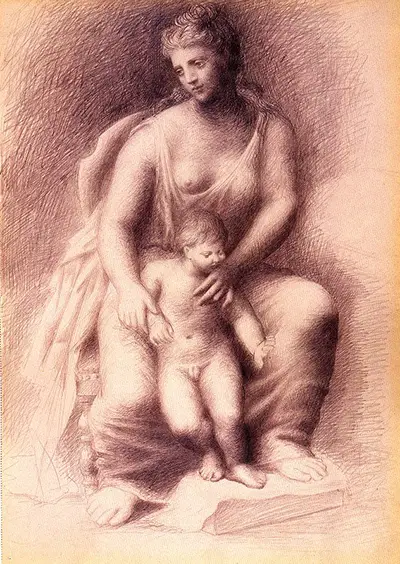Though he was well known for his Cubism by the 1920s, Mother and Child is one of Picasso's less abstract works. A deceptively simple oil on canvas piece, it depicts a mother and her child enjoying a joyful moment in what may be a rural landscape (if the suggestive leaves drawn above their heads in the corner of the painting are anything to go by). The figure of the mother and child was one that Picasso kept coming back to throughout his career. He must have painted dozens of pictures on this theme. In 1901, for instance, he painted another work entitled Mother and Child, which depicts a woman clothed in a long blue robe kissing her son, who stands beside her and cranes upwards to receive the kiss.
This version of Mother and Child resembles a medieval Pieta painting (i.e. a painting of Christ as a child and the Virgin Mary) than the 1922 version does. In particular, the blue robe of the mother is instantly evocative of the way that the Virgin Mary is traditionally represented. Could it be the case that religious symbolism loomed larger for Picasso earlier on in his career and then he gradually let that symbolism fall away from his world view, replacing it with more realistic imagery?
Mother and Child might be described as more of a sketch than a painting. The two human figures have an air of more transparency than solidity, though they have clearly been drawn with determination and skill. Picasso's sketches have been described as 'ethereal', and many viewers may detect a certain ethereality in Mother and Child. Though, as has already been established, this version of Mother and Child is not so directly redolent of the traditional Pieta image as the 1901 version is, there is certainly something spiritual and perhaps even otherworldly about this painting.

